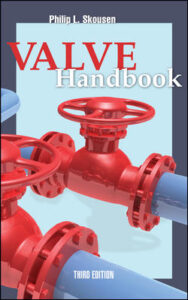Valve Handbook 3rd Edition
Valve Handbook 3rd Edition
Valve Handbook 3rd Edition, discusses design, performance, selection, operation, and application. This updated resource features a new chapter on the green technology currently employed by the valve industry, as well as an overview of the major environmental global standards that process plants are expected to meet.The book also contains new information on:
- Valves used in the wastewater industry
- Applying emergency shutdown (ESO) valves
- Recent changes to shutoff classifications
- Valves specified for the nuclear industry
- The procurement process for the Nuclear Stamp (N-Stamp)
- The emergence of wireless technology and its application to current smart technology
- Characteristics of high-performance hydraulic fluid
You can also Read The Safety Relief Valve Handbook Design
Valve Handbook, Third Edition, covers:
- Valve selection criteria
![Valve Handbook 3rd Edition]()
- Manual valves
- Check valves
- Pressure relief valves
- Control valves
- Manual operators and actuators
- Smart valves and positioners
- Valve and actuator sizing
- Green valve technology and application
- Common valve problems
- Valve purchasing issues
The valve industry has continued to support the “green” goals of the process industry by providing leak-less or leak-resistant valve designs. With the potential of multiple leak paths, valves have historically been a weak link in the process system in terms of fugitive emissions and process or energy leaks. Recent design advancements have improved the integrity of the valve and its ability to resist leakage. Also, the addition of sensors and smart technology has provided additional safeguards to discover leakage or performance problems early.
Since the first edition of Valve Handbook in 1998, the valve industry has continued to evolve with these dynamic times. Economic pressures brought on by widespread global recessions in 2001 and 2007 have forced the process industry to rely on technology and stricter standards to produce greater efficiencies across the production cycle. In addition, corporate management oncerned with increasing internal costs.


Comments are closed.